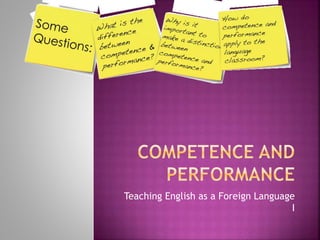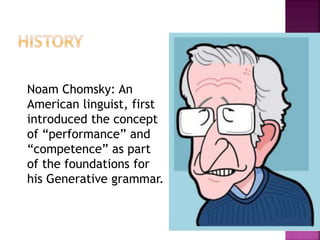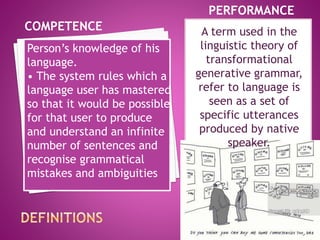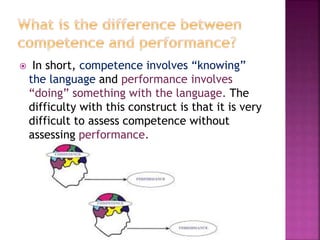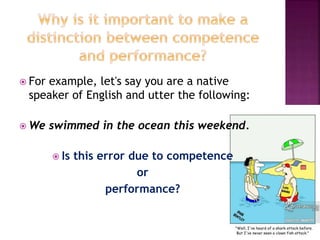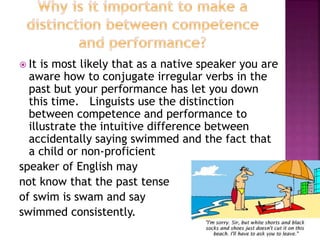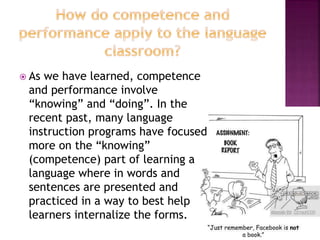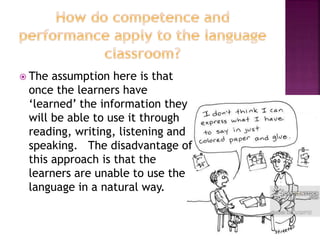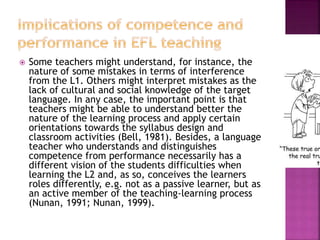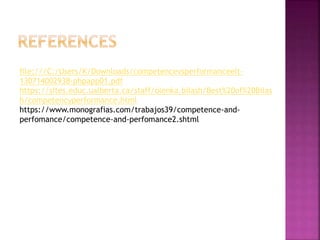This document discusses the distinction between competence and performance in language learning. It defines competence as a learner's internalized knowledge of the language system, while performance refers to a learner's actual use of language. The document notes that while competence is difficult to directly observe, performance provides a way to assess learners' proficiency. However, poor performance may be due to lack of opportunity rather than underlying competence. The document suggests using communicative, interactive, contextualized activities to better link competence and performance and provide accurate assessments of learners' abilities.
